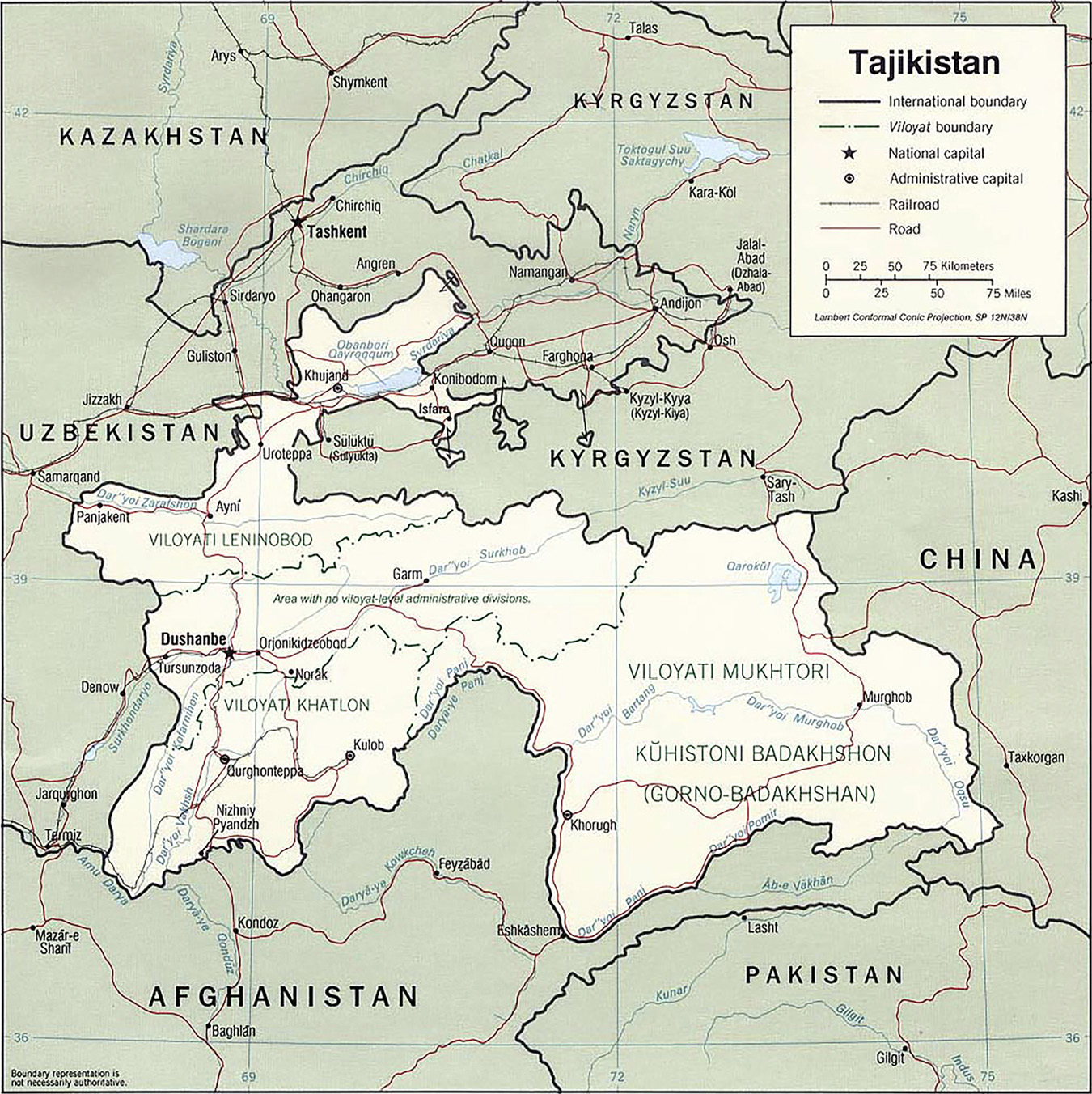Tajikistan on the Move
Contemporary Central Asia: Societies, Politics, and Cultures
Series Editor
Marlene Laruelle, George Washington University
At the crossroads of Russia, China, and the Islamic world, Central Asia remains one of the worlds least-understood regions, despite being a significant theater for muscle-flexing by the great powers and regional players. This series, in conjunction with George Washington Universitys Central Asia Program, offers insight into Central Asia by providing readers unique access to state-of-the-art knowledge on the region. Going beyond the media clichs, the series inscribes the study of Central Asia into the social sciences and hopes to fill the dearth of works on the region for both scholarly knowledge and undergraduate and graduate student education.
Recent Titles in Series
Eurasias Shifting Geopolitical Tectonic Plates: Global Perspective, Local Theaters , by Alexandros Petersen
The New Geopolitics of the South Caucasus: Prospects for Regional Cooperation and Conflict Resolution , edited by Shireen T. Hunter
Constructing the Uzbek State: Narratives of Post-Soviet Years , edited by Marlene Laruelle
Language, Literacy, and Social Change in Mongolia: Traditionalist, Socialist, and Post-Socialist Identities , by Phillip P. Marzluf
The Dialectics of Post-Soviet Modernity and the Changing Contours of Islamic Discourse in Azerbaijan: Towards a Resacralization of Public Space , by Murad Ismayilov
The European Unions Influence in Central Asia: Geopolitical Challenges and Responses , by Olga Alinda Spaiser
Central Asia in the Era of Sovereignty: The Return of Tamerlane? , edited by Daniel L. Burghart and Theresa Sabonis-Helf
State-Building in Kazakhstan: Continuity and Transformation of Informal Institutions , by Dina Sharipova
Tajikistan on the Move: Statebuilding and Societal Transformations , edited by Marlene Laruelle
Tajikistan on the Move
Statebuilding and Societal Transformations
Edited by Marlene Laruelle
lexington books
Lanham Boulder New York London
Published by Lexington Books
A wholly owned subsidiary of The Rowman & Littlefield Publishing Group, Inc.
4501 Forbes Boulevard, Suite 200, Lanham, Maryland 20706
www.rowman.com
Unit A, Whitacre Mews, 26-34 Stannary Street, London SE11 4AB
Copyright 2018 by The Rowman & Littlefield Publishing Group, Inc.
All rights reserved . No part of this book may be reproduced in any form or by any electronic or mechanical means, including information storage and retrieval systems, without written permission from the publisher, except by a reviewer who may quote passages in a review.
British Library Cataloguing in Publication Information Available
Library of Congress Cataloging-in-Publication Data
Names: Laruelle, Marlene, editor.
Title: Tajikistan on the move : statebuilding and societal transformations / edited by Marlene Laruelle.
Description: Lanham, Maryland : Lexington Books, 2018. | Series: Contemporary Central Asia : societies, politics, and cultures | Includes bibliographical references and index.
Identifiers: LCCN 2018015728 (print) | LCCN 2018016021 (ebook) | ISBN 9781498546522 (Electronic) | ISBN 9781498546515 (cloth : alk. paper)
Subjects: LCSH: TajikistanPolitics and government1991- | TajikistanForeign relations1991- | TajikistanSocial conditions1991- | Institution buildingTajikistan. | Social changeTajikistan.
Classification: LCC DK928.865 (ebook) | LCC DK928.865 T35 2018 (print) | DDC 958.6086dc23
LC record available at https://lccn.loc.gov/2018015728
 The paper used in this publication meets the minimum requirements of American National Standard for Information SciencesPermanence of Paper for Printed Library Materials, ANSI/NISO Z39.48-1992.
The paper used in this publication meets the minimum requirements of American National Standard for Information SciencesPermanence of Paper for Printed Library Materials, ANSI/NISO Z39.48-1992.
Printed in the United States of America
Contents
Acronyms
ACMAuthoritarian Conflict Management
AIDSacquired immunodeficiency syndrome
AKDNAga Khan Development Network
ARVantiretroviral therapy
CISCommonwealth of Independent States
CNRCommission on National Reconciliation
CPCCountry of Particular Concern
CSTOCollective Security Treaty Organisation
DFIDDepartment for International Development
DPTDemocratic Party of Tajikistan
EAECEurasian Economic Community
EEUEurasian Economic Union
FMSFederal Migration Service
FPEforeign policy executive
FPIforeign policy intellectual
G24Group 24
GBAOGorno-Badakhshan Autonomous Region
GDPgross domestic product
GKNBState Committee of National Security
GNPgross national product
HDIHuman Development Implementation
HDIMHuman Development Implementation Meeting
HIVhuman immunodeficiency virus
IDUinjection drug use
IMFInternational Monetary Fund
IMUIslamic Movement of Uzbekistan
IRPTIslamic Renaissance Party of Tajikistan
ISISIslamic State of Iraq and Syria
LGBTlesbian, gay, bisexual, and transgender
MDGMillennium Development Goal
MFPmulti-vector foreign policy
MPIMultidimensional Poverty Indicator
MVDMinistry of Internal Affairs of the Russian Federation
NATONorth Atlantic Treaty Organization
NGO non-governmental organizations
OECDOrganisation for Economic Co-operation and Development
OMONspecial police units of Federal Police within the National Guard of Russia
OSCEOrganization for Security and Cooperation in Europe
PFTPopular Front for Tajikistan
PTSDposttraumatic stress disorder
QCAQualitative Comparative Analysis
SDGSustainable Development Goals
TALCOTajik Aluminum Company
TBtuberculosis
TNUTajik National University
UNUnited Nations
UNAIDSUnited Nations Programme on HIV/AIDS
UNDPUnited Nations Development Programme
UNHCRUnited Nations High Commissioner for Refugees
UNODCPUnited Nations Office on Drugs and Crime
UNTOPUnited Nations Tajikistan Observation Mission
USUnited Statesalso Washington
USAIDU.S. Agency for International Development
USSRUnion of Soviet Socialist Republics
UTOUnited Tajik Opposition
WUA Water User Association
Political map of Tajikistan (2001).
University of Texas Libraries.
Introduction
Marlene Laruelle
The southernmost and poorest state of the Eurasian space, Tajikistan collapsed immediately upon the fall of the Soviet Union and plunged into a bloody five-year civil war (19921997) that left more than 50,000 people dead and more than half a million displaced. After the 1997 Peace Agreements, Tajikistan stood out for being the only post-Soviet country to recognize an Islamic party, the Islamic Renaissance Party of Tajikistan (IRPT), a key actor in the civil war but also in post-war reconstruction and democratization. The Islamic Renaissance Party of Tajikistan was unique to the region in that it was a democratic Islamic party that accepted the secular nature of the state and parliamentary representation. However, this recognition was short-lived: in 2015, the authorities accelerated the authoritarian move that had been set in motion several years earlier and decided to ban the Islamic Party on thefalsepretext of its links with the Islamic State in Syria and Iraq. The IRPT ban raised little domestic backlash from Tajik society, confirming very low levels of social mobilization in favor of political actors.
Tajikistans political stability has always been precarious. In the restive Rasht Valley and the autonomous region of Gorno-Badashkhan, situated in the Pamirs, tensions have regularly flared between local elites and Dushanbe. Labeled Islamist insurgencies by the authorities so as to receive international support and strengthen the governments domestic legitimacy, these insurgencies have involved several conflicts of interest within the shadow economy (mostly around the trafficking of drugs and cigarettes), as well as the rebalancing of influence between former warlords and central Dushanbe. As such, scholars continue to debate whether these events suggest state weakness or, on the contrary, success in recentralizing the polity around Rahmon, who has removed presidential term limits and looks set to establish a multigenerational dynasty by promoting his son Rustam Emomali as his successor.
Next page


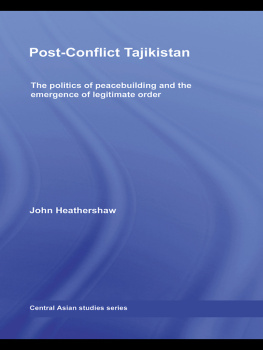
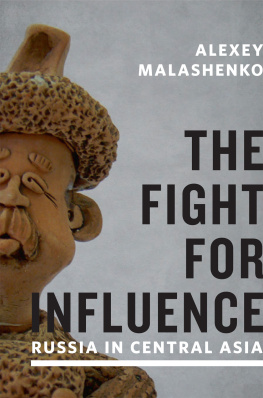
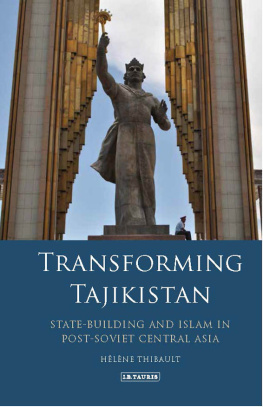

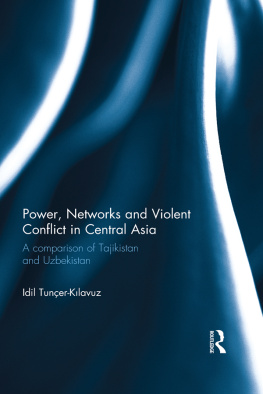
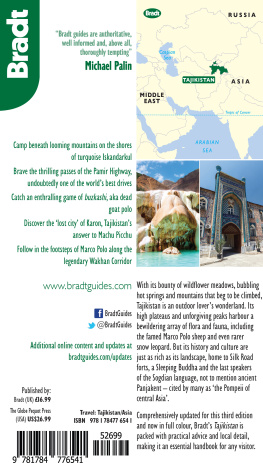

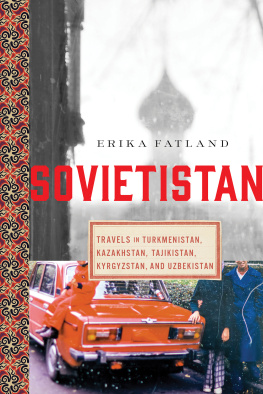
 The paper used in this publication meets the minimum requirements of American National Standard for Information SciencesPermanence of Paper for Printed Library Materials, ANSI/NISO Z39.48-1992.
The paper used in this publication meets the minimum requirements of American National Standard for Information SciencesPermanence of Paper for Printed Library Materials, ANSI/NISO Z39.48-1992.